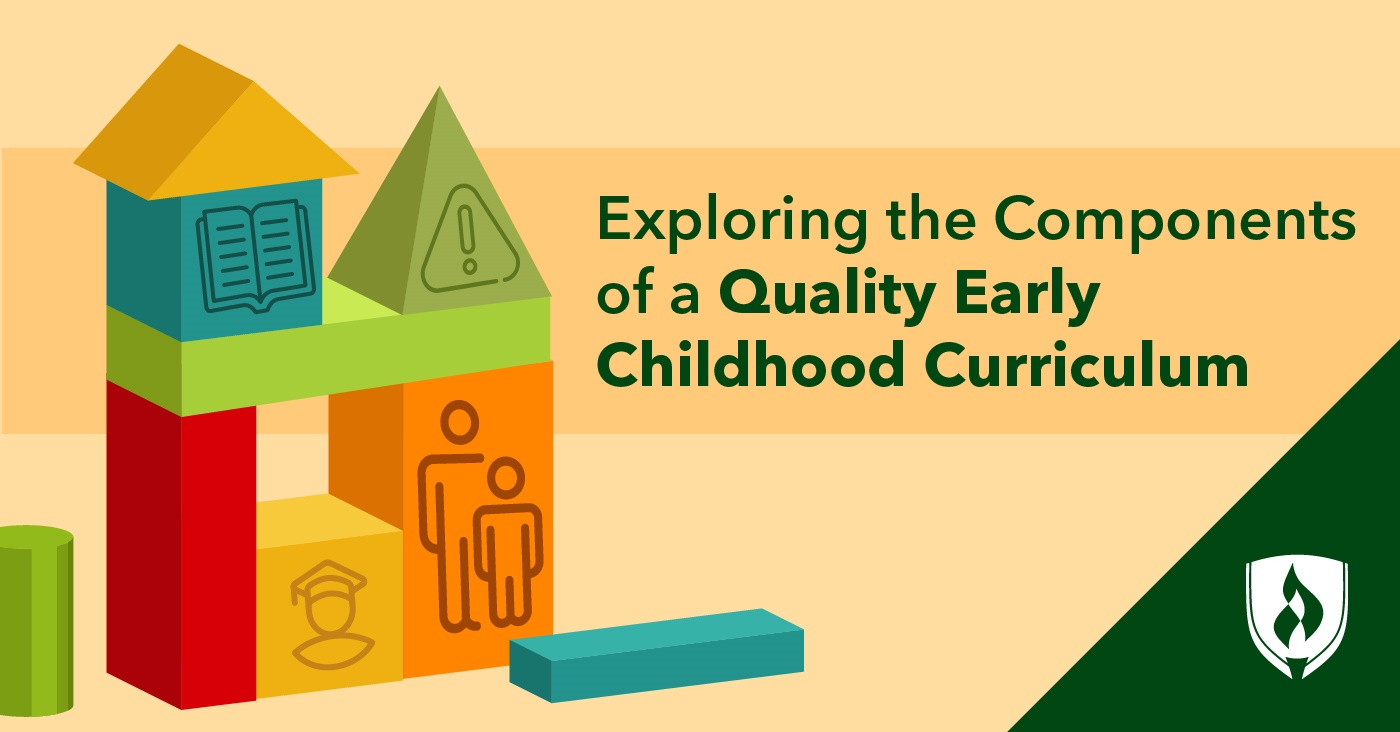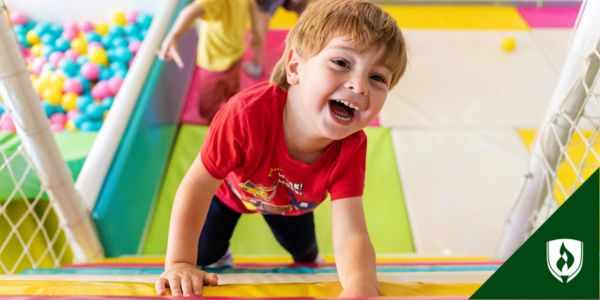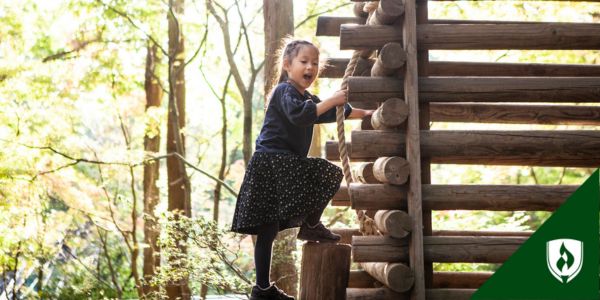
Choosing an early childhood program is both exciting and nerve-racking for parents. Parents know their little one has a lot to gain much from learning in a structured environment and making new friends, but it can be hard to know what to look for in an early childhood education (ECE) program and curriculum.
While ECE is not mandatory in the United States, many parents choose to enroll their children because of the myriad of social and emotional benefits. When you know what to look for in a preschool, a quality early childhood education experience can help set children up for success in the classroom and in life overall.
So what makes a quality early childhood program? Use the following guide to help navigate different kinds of programs and understand the key components to a high-quality early childhood curriculum.
Explore Social Development in Children to understand the importance of social skills development in early childhood education.
Early childhood education settings
There are a variety of settings for early childhood programs. In rural communities, there tends to be more in-home providers, whereas childcare centers are more plentiful in urban areas. Parent Aware separates early childhood programs into three broad categories:1
- Preschools (public and private) and childcare centers: These programs are licensed and monitored by either the human services or education departments in each state. Some may be license-exempt, meaning they can provide care without having a license. License-exempt programs can become certified by meeting health and safety standards, which allows the programs to serve families that receive childcare assistance.
- Family childcare providers: In-home programs are licensed and monitored by the county or tribal licensing agency. Providers may care for infants, toddlers, preschoolers and school-age children in their homes.
- Head Start: Early Head Start, Head Start and their childcare partners serve young children from families with low income. Programs may be based in centers, schools or family childcare homes.
Early childhood education curriculum options
Unlike grade school classrooms, early childhood education curriculums vary widely depending on the philosophy that the provider follows. Some may choose to develop their own models of learning while others will base their curriculums on existing methods, like the following:
- Montessori: The “Montessori Method” is based on two simple truths: Children must be respected, and children spontaneously love learning. Its goal is the finest development of the whole human being—emotionally, physically, intellectually and spiritually—toward the nurturing of peaceful, caring citizens.
- Reggio Emilia: Relationships are at the heart of this teaching philosophy, which seeks to create an environment that encircles the child with three “teachers,” or protagonists. The first teacher and active partner in education is the parent. They are followed by the classroom teacher, who intentionally engages children in meaningful work and conversation. The third teacher is the environment—a setting designed to be not only functional but also beautiful. It is the child’s relationships with parent, teacher and environment that ignite learning.
- Creative Curriculum®: This is a research-based approach that supports the development of the whole child. High-quality, comprehensive resources empower educators to intentionally teach and care for our youngest learners during the most critical and formative years of development.
- Waldorf: The Waldorf method “emphasizes imaginative play, art and creative activities, music, storytelling, authentic handwork, and honoring the rhythms of the seasons and of life.” The curriculum is literacy rich and provides children the opportunity to play, work and explore their world in an unhurried environment.
4 Components of a Quality Early Childhood Education Program
There are many different factors to consider as you search for an ECE program. Some parents put more emphasis on developing creative thinking and imagination skills while others may focus on early exposure to academic content or “kindergarten readiness.” Regardless of which curriculum you end up choosing, the following components are essential for a high-quality early childhood education program.
1. Qualified staff with low turnover and access to professional development
This critical component can be a little tricky to navigate as the early childhood education field does not have across-the-board standardized education and training requirements. That said, staff and teachers with a college education focused on early childhood education is a strong indication of a quality ECE program.
Additionally, it’s important for staff to have ongoing access to learning opportunities in order to stay informed and grow their strengths and competencies as educators. Professional development for educators can include workshops on issues specific to a specific age group, like Sudden Infant Death Syndrome (SIDS), or training on how to deal with common behaviors, like separation anxiety and tantrums.
Parents should also inquire about the longevity of the staff in the program. Children thrive in stable environments, and a high caregiver turnover rate can cause unnecessary stress as well as be a potential indicator of insufficient staffing standards.
2. Appropriate child-to-staff ratio and small class sizes
Another important indicator of a high-quality program is the child-to-staff ratio. Again, the exact rules vary according to the age groups, care settings and state regulations. A general rule is that the child-to-instructional staff ratio should be no more than 10:1 and a maximum class size of 20 children.
For the youngest children, the ratio is even smaller. Small babies and toddlers require lots of attention and care, and a low ratio allows instructors to supervise effectively and support each child’s needs and development. Parents who are particularly concerned with their child getting individual attention can look for programs that consistently maintain ratios that are lower than the state requirements.
3. Developmentally appropriate and evidence-based curriculum.
If “curriculum” seems like too weighty of a word to describe what babies, toddlers and young children learn in ECE programs, think again. While it’s true that ECE teachers aren’t assigning term papers or giving pop quizzes, their lesson plans are crafted to be developmentally appropriate, engaging and informed by evidence-based research.
The National Association for the Education of Young Children (NAEYC)® defines “curriculum” as “the organized framework that delineates the content children are to learn, the processes through which children will use to achieve the identified curricular goals, what teachers will do to help children achieve these goals, and the context in which teaching and learning occur.”2
The formative years of a child’s life are a period of intense learning, change and growth at each stage. Hallmarks of a developmentally appropriate and evidenced-based curricula are based on knowledge from three sources:2
- What is known about age-related child development and learning
- What is known about the strengths, interests and needs of individual children
- What is known about the social and cultural contexts in which children are living
4. Rigorous health and safety standards
Even before the COVID-19 pandemic, health and safety standards were priority concerns for parents when evaluating ECE options. Every program should follow regulations as mandated by the state licensing body. Some examples of best practices include:
- Sanitizing toys and high-touch surfaces throughout the day, in addition to a full clean at closing time
- Maintaining a designated surface for diaper changes; wearing new gloves each time; and following a three-step soap, rinse and sanitize protocol after every change
- Providing a crib or cot for each individual child (no shared sleep spaces) and following safe sleep practices for their ages
- Serving meals and snacks that fulfill nutrition requirements as defined by the state
- Periodic screening for general development and autism using standardized, validated tools as recommended by the American Academy of Pediatrics
When it comes to learning, there is no such thing as starting too early
It’s clear that a quality early childhood education program helps kids build a strong foundation for lifelong learning. For more information about the value of a quality early childhood education program, check out “5 Reasons Why the Importance of ECE Is Impossible to Ignore.” Additionally, check out our other article "37 Kid-Friendly Jokes to Tell Your ECE Class".
Check out professional early childhood education associations.
Related Articles:
1 “Types of Care & Education” Parent Aware [accessed April 2021] https://www.parentaware.org/learn/types-of-child-care/
2Sue Bredekamp and Carol Copple "Developmentally Appropriate Practice in Early Childhood Programs" National Association for the Education of Young Children, 2008.
NAEYC is a registered trademark of the National Association for the Education of Young Children nonprofit corporation.
The Creative Curriculum is a registered trademark of Teaching Strategies, LLC.




